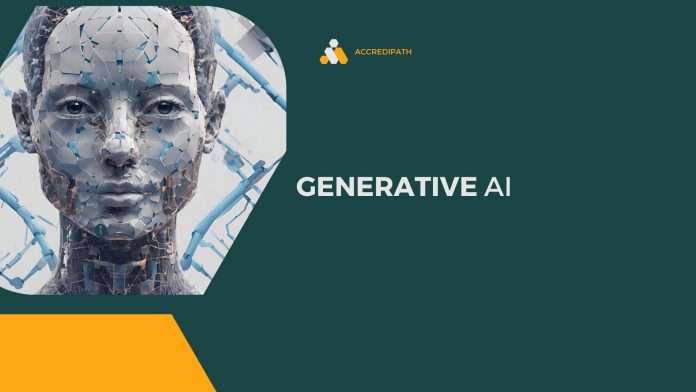Generative AI, also known as Generative Adversarial Networks (GANs), is a subset of artificial intelligence that focuses on creating and generating new data that resembles real data. Unlike traditional AI models that are designed for specific tasks, it aims to produce new content that does not exist in the training data.
Generative AI works through the use of two neural networks:
Generator: The generator network takes random noise as input and attempts to generate new data, such as images, music, or text. It tries to mimic the patterns and characteristics present in the training data to create realistic outputs.
Discriminator: The discriminator network acts as a “critic” and tries to differentiate between real data from the training set and the generated data from the generator. Its goal is to better distinguish real data from fake data over time.
The two networks are trained together in a competitive process. The generator tries to create realistic data to fool the discriminator, while the discriminator learns to improve its ability to distinguish between real and generated data. As training progresses, the generator becomes better at producing realistic data, and the discriminator becomes better at detecting fakes.
Generative AI has applications in various fields, including:
Image Generation: GANs (Generative adversarial networks) can create realistic images of people, objects, or scenes that don’t exist in reality.
Art and Design: GANs can produce novel artworks, generate new graphic designs, or help artists explore creative possibilities.
Video and Animation: It can create realistic animations, generate video content, and even enhance existing videos.
Text Generation: GANs can generate realistic and coherent text, such as natural language articles or storylines.
Data Augmentation: GANs can be utilized to augment existing datasets for training machine learning models, leading to improved model performance.
Generative AI has advanced significantly in recent years, and it continues to be an exciting area of research and development in the AI community. However, it also comes with challenges, such as ensuring the generated data aligns with ethical considerations and doesn’t propagate bias or misinformation.
This is a powerful tool that can be used to create new content in a variety of ways. As this technology continues to develop, we can expect to see even more innovative and creative applications of this technology in the future.
Here are some examples of generative AI applications:
ChatGPT: ChatGPT is a generative AI model that can be used to generate text conversations. It is used by Google AI to power the Google Assistant.
DALL-E: DALL-E is another model that can be used to generate images from text descriptions. It was created by OpenAI.
Bard: Bard is a large language model from Google AI, trained on a massive dataset of text and code. It can generate text, translate languages, write different kinds of creative content, and answer your questions in an informative way.
These are just a few examples of the many generative AI applications that are available. The field of AI is rapidly evolving, and we can expect to see even more innovative and creative applications of this technology in the future.
What are courses available to learn Generative AI?
There were several online courses available to learn this, focusing on Adversarial Networks (GANs) and related topics. Here are some popular courses from reputable platforms:
Generative AI with Large Language Models course
These are just a few of the many courses available to learn Generative AI. The best approach for you will depend on your interests and experience level.
In addition to these courses, there are many other resources available to learn Generative AI. These include books, articles, and online tutorials. You can also find a wealth of information on GitHub and other repositories.
If you are interested in learning Generative AI, I recommend starting with one of the courses listed above. These courses will give you a solid foundation in the basics of AI and teach you how to use popular frameworks such as TensorFlow and PyTorch.
Once you have a basic understanding of generative AI, you can explore other resources to learn more about specific topics or applications. There is a lot of information available, so you should be able to find what you are looking for.

